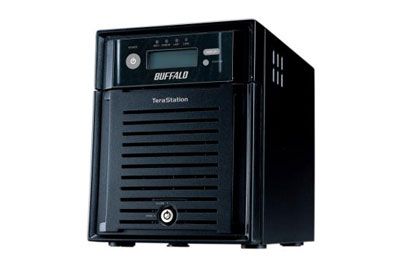IT Pro Verdict
We weren't expecting much from Buffalo's TeraStation III due to its staid appearance, but were pleasantly surprised by its appealing and well-designed web management interface and generally fast performance. Its slow speeds copying small files is disappointing and the lockable front door could be strengthened, but if you can live with these flaws then the TeraStation is a great NAS.

A NAS device's web management interface doesn't sound particularly glamorous, but it is an important component since, depending on how well designed it is, it can make configuration and maintenance of your NAS either a breeze or a nightmare. Thankfully, Buffalo's redesign left us impressed.
The previous interface, which has been used on all Buffalo NAS devices for the past couple of years now, had all its controls logically organised into a collapsible Windows Explorer-like tree menu along the left hand side of your browser window. As well as looking dated it could be clunky to use since it wasn't AJAX-based. Some tasks, such as assigning user accounts and groups different access permissions to different folders, took longer to complete than necessary, or weren't as intuitive as other NAS devices.

The new AJAX-based interface looks far sleeker and always displays useful information in the top right hand corner, such as the TeraStation's current IP address. The controls have been reorganised into a less bewildering number of categories arranged as a series of tabs running along the top of your browser window. It's less intimidating than both the Buffalo's own older interface as well as other NAS AJAX interfaces, such as the ones included with Synology and QNap NAS devices.
If you're used to the previous interface it can take some getting used to, but it's well-designed so it's worth bearing with. For example, the controls for creating user accounts, assigning them to groups and setting usage quotas is accomplished from a single screen, making it one of the easiest and quickest to use we've seen. Creating more than a few user accounts can be tedious in other NAS administration interfaces, but multiple accounts can be created fairly quickly using a text-based interface. A graphical interface would have been even better, but it's still useful to have. Active Directory support is present too.

